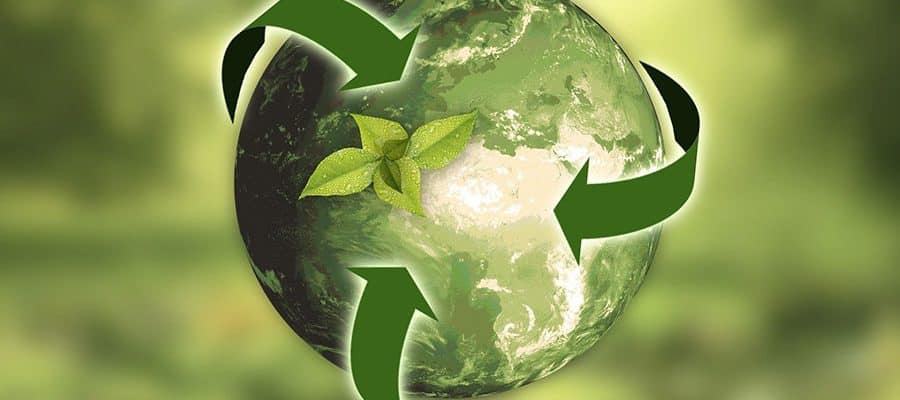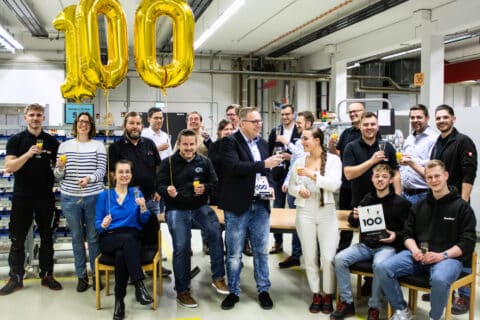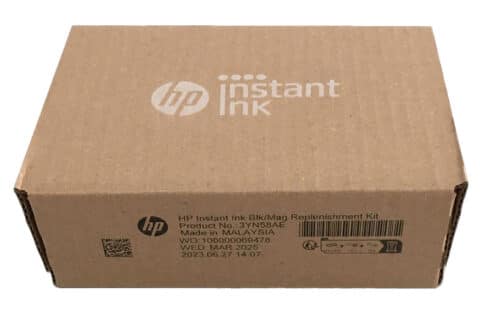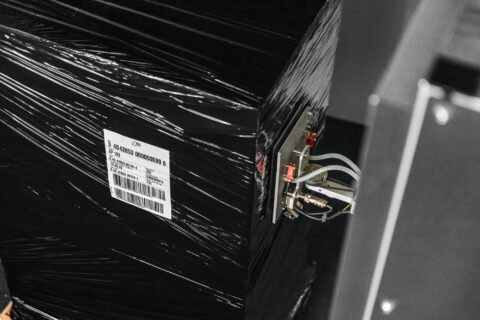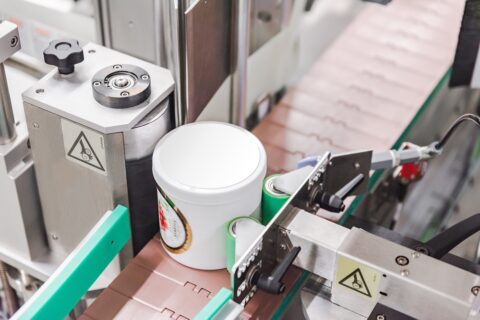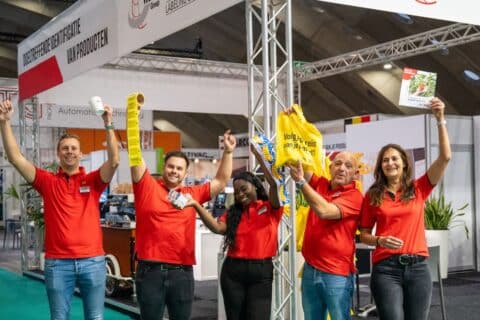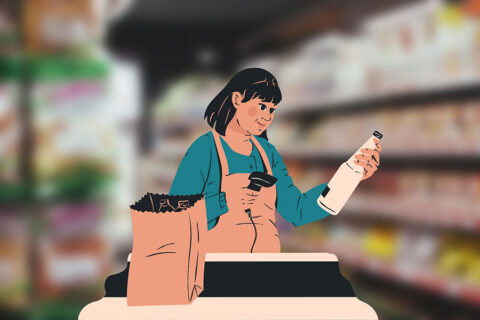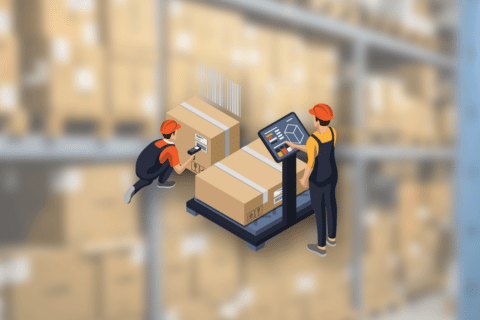Sustainability is an ever-present challenge for companies of all kinds. This is even more true if your company has committed to publishing regular sustainability reports. You’ve probably already taken many steps in the right direction. But have you ever taken a closer look at the label printing process in your production and logistics lines? Don’t overlook it, because there is often room for improvement. In this blog post, we’ll show you 5 sustainable label printing methods that can save you resources and help our planet!
1. Reducing label material
Together with your product managers, your label design team and your label supplier, investigate the following questions:
- Does the current label format still meet your requirements?
- Do you fully utilize and need the actual size of the label?
- Is it possible to make the label smaller?
- Can you achieve a narrower label roll by rotating the label format?
- Are you using the right label material for your application?
By reducing the size of labels and choosing a thinner type of backing or label as well as optimizing the arrangement on the label roll, you can decrease the consumption of raw materials. This saving will, of course, also reflect in the price of the label. A win-win situation!
2. Switching to eco-friendly labels
 Everyone loves sustainable packaging that is free from plastics or based on recycled material. But often times, the labels placed on it are not. Did you know that there are innovative eco-friendly labels based on natural materials such as stone, grass or apple peel? They are made of renewable raw materials. Some of them are even compostable. Another great option is to use recycled labels. You can also purchase solvent-free thermal transfer ribbons that help protect nature, human health and your label printer.
Everyone loves sustainable packaging that is free from plastics or based on recycled material. But often times, the labels placed on it are not. Did you know that there are innovative eco-friendly labels based on natural materials such as stone, grass or apple peel? They are made of renewable raw materials. Some of them are even compostable. Another great option is to use recycled labels. You can also purchase solvent-free thermal transfer ribbons that help protect nature, human health and your label printer.
3. Applying linerless labels
Have you heard of labels with no backing, liner or backing paper? Linerless labels do not have a backing with silicone to remove it from. Instead, they have a dry adhesive layer. Moistening makes the dry adhesive layer soft and active. In comparison to standard labels you can fit almost twice as many labels on one label roll. Linerless labels are suitable for absorbent surfaces such as cardboard.
 Weber Marking engineers have developed a labeling system that is designed to print and apply linerless labels effortlessly: Our Legi-Air 2050 NoLiner uses a minimal amount of water to activate the adhesive and apply the labels onto products or boxes. For example, an A6 format sized label only needs as little as 0.8 grams of water to be activated. The integrated printer automatically cuts the label as required in the process.
Weber Marking engineers have developed a labeling system that is designed to print and apply linerless labels effortlessly: Our Legi-Air 2050 NoLiner uses a minimal amount of water to activate the adhesive and apply the labels onto products or boxes. For example, an A6 format sized label only needs as little as 0.8 grams of water to be activated. The integrated printer automatically cuts the label as required in the process.
4. Recycling release paper waste
Unless you use linerless options, every pressure-sensitive label comes with a backing to act as the carrier and protect the adhesive. The so-called release liner is a thin sheet with a silicone layer that allows the adhesive to come off the roll intact and be applied to another surface.
 After the labels are applied, the release paper is usually disposed of as waste, which is landfilled, incinerated or downcycled. But there is a better way to reduce the use of virgin raw materials and cut down CO2 emissions: Weber Marking Systems is a partner of Cycle4green who specialize in recycling release paper. We simply separate release paper waste by collecting it in designated containers directly at the label production line. Following a collection schedule, the waste will be picked up free of charge and transported to a recycling site, where the release paper waste is de-siliconized and paper fiber is used for production of recycled papers.
After the labels are applied, the release paper is usually disposed of as waste, which is landfilled, incinerated or downcycled. But there is a better way to reduce the use of virgin raw materials and cut down CO2 emissions: Weber Marking Systems is a partner of Cycle4green who specialize in recycling release paper. We simply separate release paper waste by collecting it in designated containers directly at the label production line. Following a collection schedule, the waste will be picked up free of charge and transported to a recycling site, where the release paper waste is de-siliconized and paper fiber is used for production of recycled papers.
Annually, we are diverting approx. 60 tons of release paper waste into recycling generating 120-ton-savings in CO2. We love to actively bring liner recycling to attention of our customers and support their goals towards zero waste!
5. Considering alternative technolgies
 Imagine that you may not need labels to print text, codes and graphics on various surfaces! Weber Marking’s cost-effective inkjet printers meet the requirements of many labeling applications as well. They truly stand out for higher maximum printing speed as well as lower printing and maintenance costs. Key features that come in handy not only in times of label shortage.
Imagine that you may not need labels to print text, codes and graphics on various surfaces! Weber Marking’s cost-effective inkjet printers meet the requirements of many labeling applications as well. They truly stand out for higher maximum printing speed as well as lower printing and maintenance costs. Key features that come in handy not only in times of label shortage.
Printing up to 34 mm in height on almost any surface is easy to implement thanks to the latest printing technology of the Markoprint integra PP RAZR. Another great example is our Markoprint integra PP 108 bicolor: It prints in high resolution (up to 108 mm print in height) and in two colors. Many of our customers have happily switched to inkjet printing for their logistics labeling and even GHS labeling.
 In order to stop global warming, every company should be encouraged to reduce their carbon footprint.
In order to stop global warming, every company should be encouraged to reduce their carbon footprint.Our whitepaper presents the latest technology trends and developments in the area of product labeling and coding. It will introduce you to eco-friendly label materials as well as resource-friendly printing and marking methods!
Get in touch with our experts
Have we made you curious? We will be happy to show you personally how you can improve your labeling applications with our easy-to-integrate solutions. Simply let us know when you would like to meet with us for an on-site consultation (or video conference)!
Contact us via email


